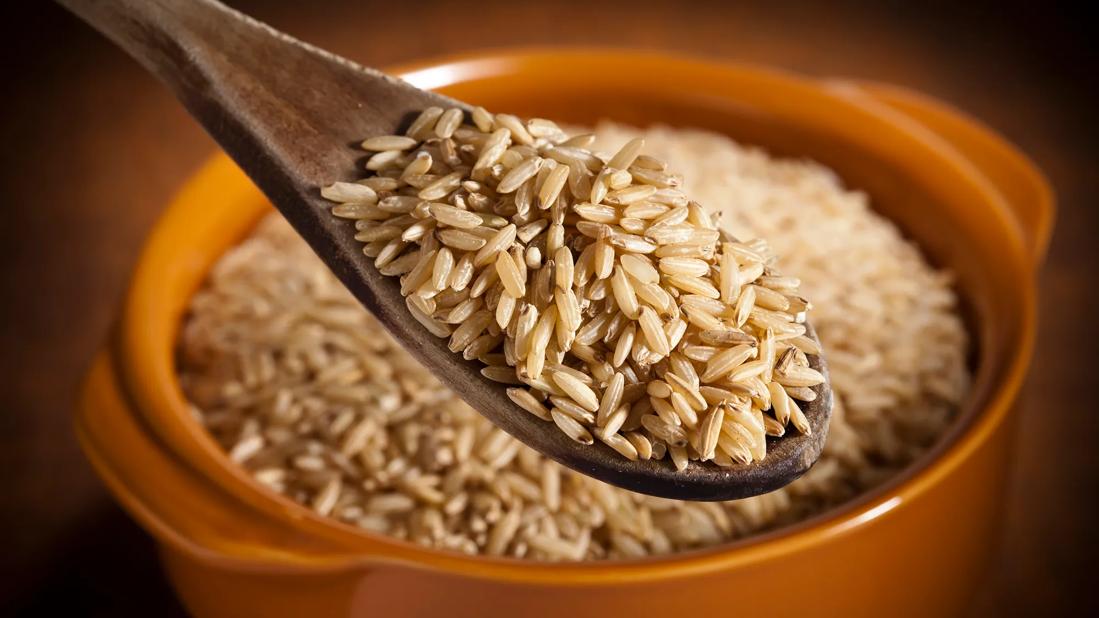Brown rice can help lower your risk of chronic disease, support digestion, manage weight and blood sugar, and build muscle

What color rice do you usually eat? The most common answer to this question is white. But if you’re looking for a more nutritious option, brown rice might be worth considering for your future meals.
Advertisement
Cleveland Clinic is a non-profit academic medical center. Advertising on our site helps support our mission. We do not endorse non-Cleveland Clinic products or services. Policy
Because it goes through minimal processing, brown rice has more nutrients and fiber than white rice to make it a healthier dietary choice.
Let’s take a closer look at the advantages with registered dietitian Beth Czerwony, RD, LD.
What does your body get out of brown rice nutritionally? According to the handy scorecard available at FoodData Central, 1 cup of cooked, long-grain brown rice has approximately:
A cup of brown rice also provides heaping helpings of these nutrients:
Brown rice is a whole grain and naturally free of cholesterol and gluten. It’s low in fat with virtually no troublesome saturated fats. Brown rice also has antioxidants, nutrients and fiber that offer many health benefits.
Here’s what all of that means for your health.
Remember how we mentioned brown rice is high in manganese? Here’s an example of why that can be important.
Your body needs manganese to make an enzyme called superoxide dismutase (SOD). This enzyme acts as an antioxidant, minimizing cell damage and oxidative stress brought on by free radicals.
Advertisement
Brown rice has other antioxidants, too, including flavonoids, anthocyanins and phenolic compounds.
Research shows foods high in antioxidants can reduce the risk of chronic diseases like:
“Think of antioxidants as a Secret Service team patrolling your body looking for threats,” illustrates Czerwony. “They can find free radicals and neutralize them before they can cause any damage.”
Brown rice is high in complex carbohydrates, making it a smart dietary choice for anyone needing to keep blood sugar levels low. That includes people diagnosed with prediabetes or diabetes.
“Because it takes longer for your body to break down complex carbs, there’s a slow, steady release of sugar into your bloodstream,” explains Czerwony. “You have a sustained source of energy without unhealthy spikes in blood sugar.”
This is why brown rice has a lower glycemic index ranking. Some studies suggest brown rice may help prevent Type 2 diabetes.
Brown rice is a good source of insoluble fiber, which aids digestion and helps nudge waste (aka, your future poop) through your winding system. “It can keep everything moving along,” notes Czerwony.
As a bonus, foods with fiber also work to:
When you eat brown rice, it makes you feel full. That satisfied sensation in your belly typically lasts for a while, too, staving off hunger pangs and the need for munching and crunching between meals.
Eating less often can lead to consuming fewer calories, which can help you better manage your weight, says Czerwony. (That’s especially true when you consider the foods that often get grabbed for quick snacking.)
“If you’re not hungry,” she continues, “you’re less likely to make those less-than-nutritious choices in the middle of the day.”
This may surprise you, but brown rice is a good source of vegetarian protein. One cup of cooked brown rice provides about 10% of the protein you need every day (depending on your age and sex).
You can get protein from brown rice or brown rice protein powder. (Though not as well-known as whey protein or other protein powders, some studies suggest brown rice protein powder is just as good for you.)
Your body uses protein to:
Advertisement
Overall, brown rice is good for you. However, arsenic can be a concern if you eat a lot of it, cautions Czerwony.
Most rice contains some arsenic, as the grains absorb the natural toxin from soil and water. Given that, a rice-heavy diet may increase your risk of certain types of cancer. In large amounts, it may also be harmful to fetuses or young children.
But there are ways to limit risk, as these steps can reduce up to 70% of arsenic in rice:
Brown rice has a toasty flavor and slightly chewy texture. You’ve got options, too, as it comes in short-, medium- and long-grain varieties. There’s also long-grain brown basmati rice, which is popular in Indian dishes.
Short-grain brown rice tends to be stickier, making it a great choice as a side dish or base for curries and stir-fries. Long-grain brown rice makes a great pilaf.
If you’re looking for new ways to cook with brown rice, try one of these tasty dishes.
Advertisement
Learn more about our editorial process.
Advertisement

Eating too much salt can put extra pressure on your blood vessels and heart

High in antioxidants and vitamin C, kohlrabi lowers disease risk, protects your heart and aids digestion

The gluten-free, fiber-rich superfood supports gut and heart health and can help with diabetes management

Wasabi root may protect against cancer, food poisoning and memory loss

Limes and lime juice are rich in vitamins, minerals, antioxidants and other nutrients

This herbal drink may ease allergies and boost prostate health

The common flavor enhancer has had a bad reputation — but here’s what the research shows

This ancient grain, packed with protein and fiber, can help with weight loss and heart health

Babies can get congested easily, but you can calm their cough by keeping them hydrated, using nasal drops and running a humidifier

Weight loss may cause loose, sagging skin and muscle loss to your rear

Several conditions, like vitiligo and fungal infection, can cause a loss of pigmentation, leading to white spots or patches on your skin